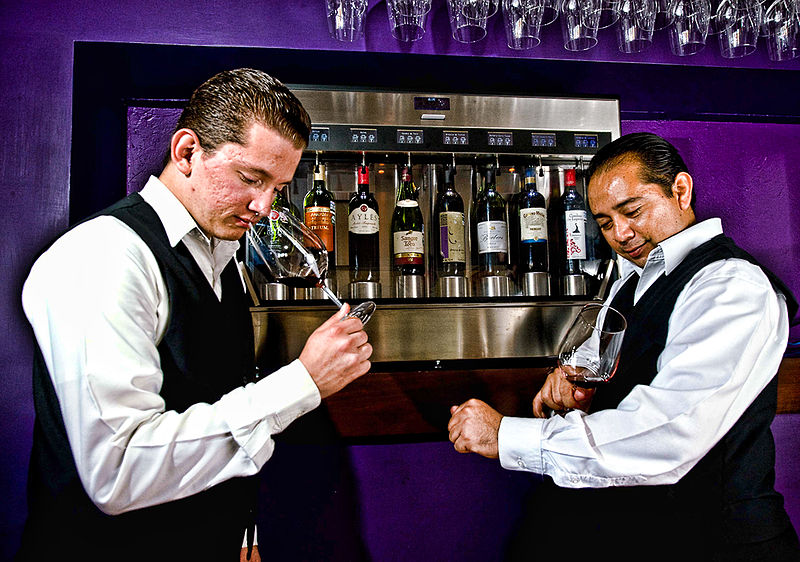
Ordering wine at a restaurant should be no different than choosing the food you would like to eat. But that is not always the case, is it? Depending on the wine list, this decision can be daunting and even off-putting. With some practice, however, anyone can master this ostensibly cryptic but actually straightforward trade.
Choosing
Selecting a wine really depends on the situation – are you with friends? Is it date night? A family gathering? Like anything else, the wine should ideally complement the moment. Blaring death metal during the first date, for instance, is probably going overboard, unless you’re both into it. To know exactly what death metal means in terms of wine is difficult for newcomers to answer.
This is why we seek advice. Don’t be afraid to ask the server or, if available, the sommelier for help. The professionals should nudge you in the right direction and, at the very least, be able to thwart a wine decision catastrophe.
Don't worry, food is your savior. Before asking for a recommendation, figure out what you want to eat and try to match a wine to it. A good strategy to identify a pairing is to think about what the people eat where the wine comes from. If you are eating pizza or pasta in tomato sauce, for example, chances are that an Italian wine, such as Chianti, will pair well. This strategy is not foolproof, but works well in most cases.
Focus on the menu. Oftentimes, the menu displays themes of wines, which should be interpreted as the restaurant’s strengths. If the wines offered are mostly Spanish and only a few are from California, for instance, then stick with Spanish. The few Californians are probably just crowd-pleasers and nothing to write home about.
Lastly, wine is an adventure and you should explore your head off. If you haven’t tried something, try it. Who knows? Spanish white could be your new go-to. If you are not sure, again, that are what the professionals are paid for. Remember, you will be one step closer to identifying death metal wine and what you really like.
Ordering
Placing an order can be broken down into three simple categories:
Body (light vs. medium vs. full)
The body or weight of the wine explains the viscosity. The main contributor of body is alcohol. The higher the alcohol content, the “bigger” the wine. One anology for interpreting body is thinking about milk – skim vs. whole – the cream would be the body.
Aromas and Flavors (sweet vs. savory)
There are a myriad of terms to describe the aromas and flavors of wine, ranging from apple to allspice. And then there are the infamous strange wine terms, like cat pee. For now, let’s stick to sweet and savory. Sweet connotes ripe fruit, whereas savory connotes spices and earthiness.
Texture (acidic and tannic)
All wine is naturally acidic and tannic, yet levels depend on the specific type of grape and amount of contact with grape skins during fermentation. Both are sensed by your tongue and mouth in different ways. At higher levels, acid in wine can be tart and cause salivation. Tannins, on the other hand, produce a drying sensation.
Now let's bring it home. If you were to order a wine, what would you want to say? First, you might ask a general question like, "Do you have a full-bodied red that is spicy with mild acid and tannins?" Alternatively, you may inquire about a specific wine, "How acidic is this wine?" Get ready to know what you're talking about.
Receiving
After you order, your job is not over. The server will return and verify the bottle. At this point, you want to confirm that bottle in the server’s hand is in fact the wine that you requested. Mistakes happen so double check, especially if multiple wines are offered from the same producer. Besides validating the wine, examine the general condition, such as fill level, the foil that covers the cork, and temperature.
Assuming you approve the wine, the server will open the wine and then place the cork on the table. This is your chance to inspect the cork. If there is seepage through the cork, there is a good chance the wine is flawed.
To be certain, you must sample. The server will pour a small portion of wine for the person who ordered it, referred to as the “host”. Give it a swirl, smell and taste, although be mindful of corkage and oxidation. Corked wine is a term to describe wine with cork taint, the presence of a natural fungi called TCA (2,4,6 - trichloroanisole). Another fault is oxidation in which there is too much oxygen contact with the wine. Corked wines have a moldy or wet cardboard aroma, while oxidized wines have a sherry-like aroma. If you are suspicious of either, notify the server.
To be a victim of corkage or oxidation is rare, depending on how much wine you drink. Be aware of these faults just in case, but your focus should be enjoyment of course. Lastly, the server will pour full-sized portions for the rest of the party, leaving the host for last. After such marathon of formalities, it will finally be time to take it easy and relish your new trade.










